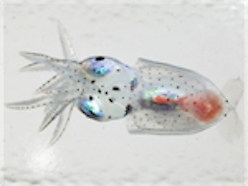[Seminar] "Stealth Squid" by Prof. Ian Gleadall, Tohoku University

Date
Tuesday, June 21, 2016 - 10:00 to 11:00
Location
Meeting Room D014, Lab1
Description
Physics and Biology Unit would like to invite you to the seminar by Prof. Ian Gleadall.
-----------------------------------------
Date: Tuesday, June 21st, 2016
Time: 10:00-11:00a.m.
Venue: D014, Lab1
-----------------------------------------
Speaker
Ian G. Gleadall
International Fisheries Science Unit
Tohoku University Graduate School of Agricultural Science
Sendai, Japan
Title: Stealth Squid
Abstract: Squid are highly intelligent molluscs which have evolved in competition with vertebrate fin-fish. They live on a knife-edge, racing against time to catch enough prey to sustain their requirements for high swimming-speed, rapid growth and reproduction, while doing their best to avoid falling prey themselves to their larger siblings or competing fin-fish predators. This life-style has resulted in a number of innovations in squid that have aided their success. This seminar discusses the use that squid have made of photophores: light-emitting organs that have evolved independently in a number of different animals, particularly in the mesopelagic zone (the ‘twilight realm’). The firefly squid has an impressive selection, the best known of which are a dazzling bright blue, apparently functioning like the full-beam headlights of an inept car driver, temporarily blinding individuals approaching in the dark. Most firefly-squid photophores, however, are tiny, stealth- functioning light organs distributed all over the ventral surface of the body and arms. The least well-known but largest of these stealth photophores are the 5 placed strategically along the ventral surface of each eye; these ventrally-directed stealth photophores are equipped with a bank of natural light-guides, which channel the light in a well-defined cone radiating downwards and outwards from the light-emitting core. The expected properties of the light from these stealth photophores and the structure of the firefly-squid retina suggest that firefly squids are able to break the stealth mechanism of their siblings, allowing these schooling animals to detect each other’s presence even though they are invisible to their predators.
Host: Jonathan Miller, Physics and Biology Unit
All-OIST Category:
Subscribe to the OIST Calendar: Right-click to download, then open in your calendar application.



